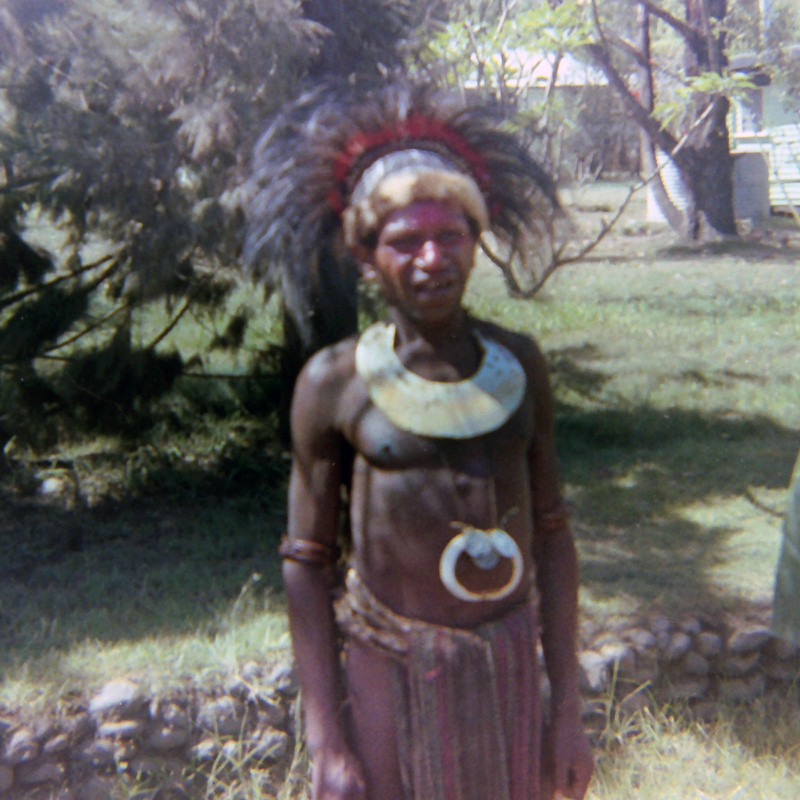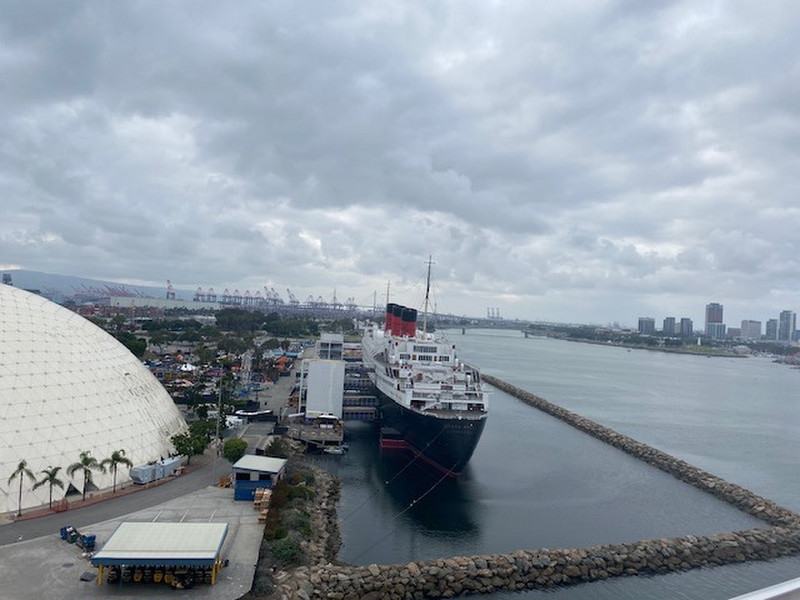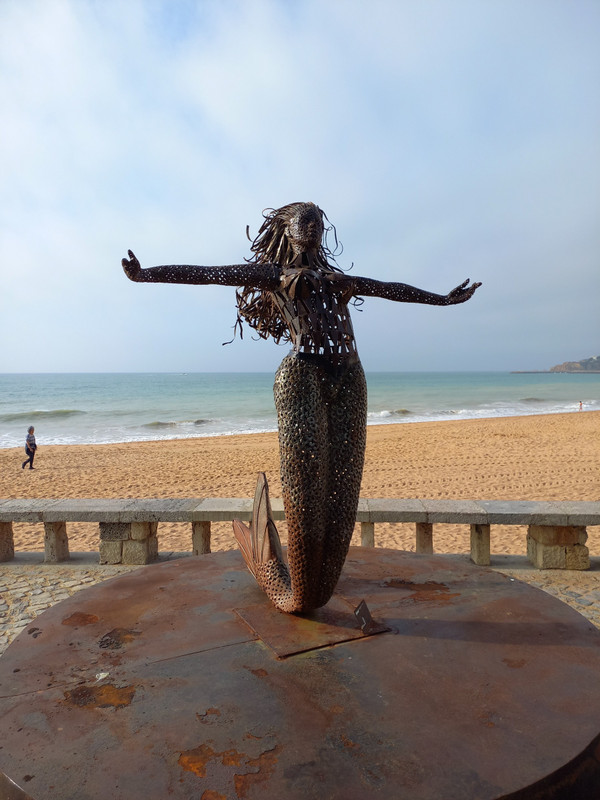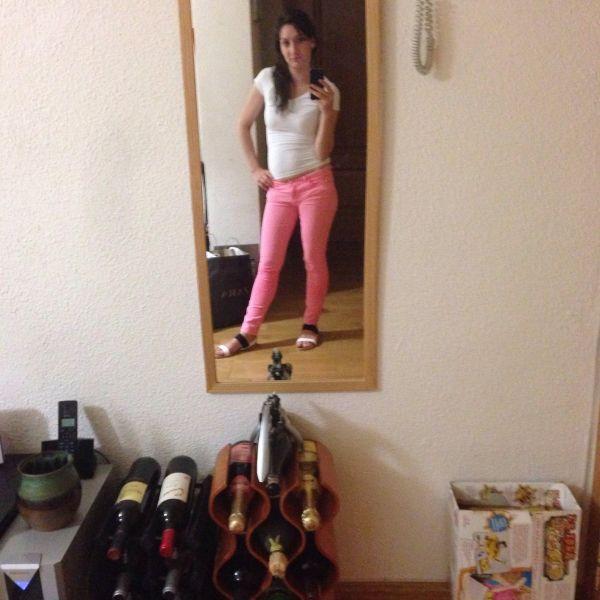Qaqortoq (formerly Julianehb) is the fourth in Greenland with 3,084 inhabitants. Founded in 1775. DSC_0617
Our second port of call in Greenland was Qaqortoq. It is a town of about 3,000 on the Julianehbsfjord (Juliana Fijord). Formerly known as Julianehb, it was founded by the Danes in 1774 as an outpost for the sealskin trade and is now the fifth largest town in Greenland. Qaqortoq is a town of blue and red buildings dotting a rocky landscape.
The only access to Qaqortoq is by sea or helicopter. The are no roads in Greenland and Qaqortoq has a heliport, but no airport. As we were arriving, an Air Greenland helicopter took off.
The port could not a ship the size of Caribbean Princess, so we tendered from the ship to the ferry dock. (The lifeboats were used as tenders.) Qaqortoq is small enough to be walkable. A visitor information centre and souvenir shop was right at the dock. Here I purchased a tupliak figure carved from reindeer antler by a local artisan. The main street led a few hundred yards to the town center. A whale fountain is the towns centerpiece. Next to it is a red wooden church and a wooden bridge over a stream. (Also next to the church is a
small wooden building. We learned that this is the wintertime town morgue.) A Passific market is nearby. We went in to see what groceries residents can buy. As in Nuuk, primarily packaged foods imported from Europe are sold. A butcher counter offers fresh meats and fish. A shelf of packaged tortillas, salsa and taco ingredients was a most interesting sight as were the offerings of hamburger and hot dog rolls along with American style sliced bread next to European breads baked locally.
The local museum is in a historic building itself, the former blacksmith shop dating to 1804. The museum contains a display of tupalik figures, Inuit masks and clothing, ulu knives and kayaks (qajaq in Greenlandic). The curved ulu knife is said to unite all Inuit populations from Alaska to Greenland. Tupalik (or tupilaq) figures were to be invested with spirits by a shaman. They are also found across all Inuit populations, though their precise nature varies among the different Inuit societies.
Returning to the dock area, we followed a path leading by cliffside sculptures carved into the rock face. Called the Stone & Man Project, more than 40 human faces appear on the cliffside along with
narwhales, a musk ox, a seal and other figures. Begun in 1993, the sculptures have been made by artists from Greenland and Nordic countries. An astonishing find here.
The focus of the port area is the Royal whose contains are everywhere. Royal Arctic holds a monopoly on transporting goods to and within Greenland. Their container ships sail from Denmark to Greenland, with small ships distributing to local ports. A passenger ferry service, Arctic Umiaq, operates along the west coast of Greenland, connecting Qaqqortoq with Nuuk and other ports. (A traditional Umiaq, or Umiak, is a vessel carrying multiple people.) Sarfaq Ituck came into port just as we were about to sail for Nanortalik.
Caribbean Princess made its way back down the Julianehbsfjord toward the Labrador Sea. Again Greenlands stark and beautiful landscape rising right out of the sea was on display. Another peak came into view, Alanngorsuaq at 1,348 feet (411 m) high.









